Cheek by Jowl chef Rishi Naleendra's guide to eating out in Singapore
Australian chef Rishi Naleendra shares his pick of Singapore's eating places, from hawker stalls to fine diners.
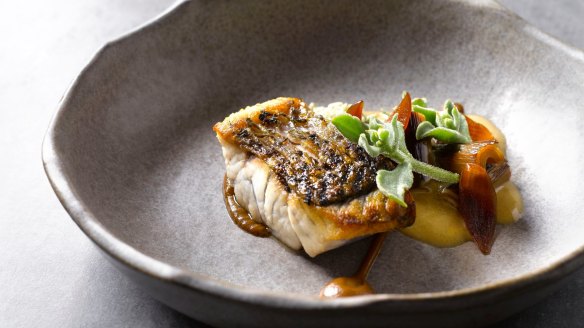
Rishi Naleendra leans in, almost conspiratorially. The head chef of Michelin-starred Singapore restaurant Cheek by Jowl is tipping me off to his favourite place for pork noodles, a seemingly simple combo of Hokkien noodles and minced pork, but laced with vinegar and chilli, bits of offal, lard and salted fish, as well as spring onion and shiitake mushrooms, all in a broth.
"It's a wonderful bowl of umami," coos the Sri Lankan-born Australian chef, who had stints at Taxi in Melbourne, followed by Tetsuya's and Brent Savage's Yellow in Sydney, before punting on Singapore in 2014.
It's not that Naleendra is necessarily trying to keep hawker stall Tai Hwa Pork Noodle on the down-low. Although, when it comes to hawker food, Singaporeans do tend to guard their faves. "The last thing locals want is to wait more for their food," says Naleendra.
Rather, he's letting me know the "uncle" – a generic term used out of respect for older Singaporeans – behind this pork noodle stall, tucked away in the Hong Lim Food Centre beneath his apartment block, has a brother with a similar place across town, Hill Street Tai Hwa Pork Noodle. Only, that place has a Michelin star, and you can wait up to two hours to be served.
"The thing is, there isn't much difference between the two," Naleendra says. Then, lowering his voice: "Actually, I prefer the pork noodles from the one at the bottom of my building."
This kind of insider info on the Lion City's famous hawker food scene, though, has only come with time for the ambitious young chef, who will chalk up four years in June.
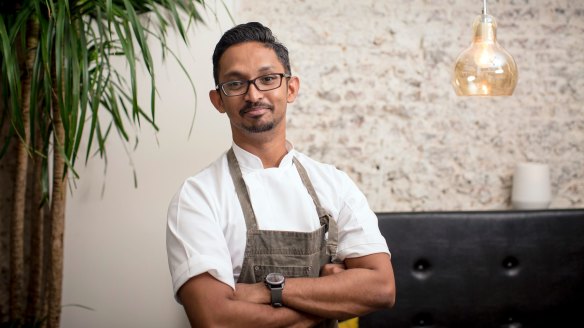
Lucky break
In that time, Naleendra has come a long way. Initially, it was all about looking for new opportunities, not ready to ensconce himself in a comfortable life in Australia with his wife Manuela Toniolo, who manages Cheek by Jowl. He chose Singapore over London because it was closer to both Australia and Sri Lanka.
"If I returned to Melbourne (from Sydney), we'd have a baby, buy a house and that would be our life," says Naleendra. "We weren't ready for that." He also saw Australian chefs, such as Burnt Ends' Dave Pynt, going great guns in food-mad Singapore.
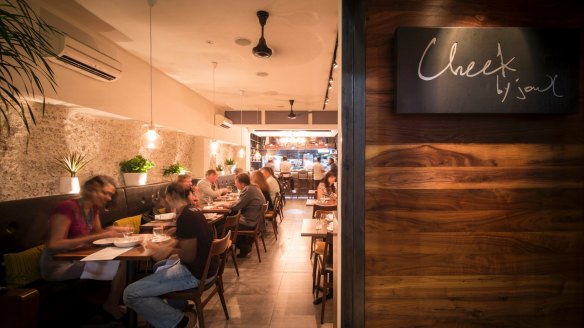
When Naleendra arrived though, he couldn't find a solid gig. In part, the island-city's strict quotas around hiring foreign workers hampered his efforts. By mid-2015, he had set up his own pop-up restaurant.
As Naleendra recalls, hotelier and restaurateur Loh Lik Peng, of boutique hotel group Unlisted Collection, dropped in for a meal one night after favourable reviews. The next thing Naleendra knew, he was being handed keys to his own place. "We had a 10-minute conversation," he says. "Peng saw beyond who I was (a chef who had neither run his own place nor been head chef). All he saw was the food. It tasted good. Obviously, he took a risk."
Originally leaving Sri Lanka to study architecture in Australia before finding his calling in the hospitality industry, Naleendra used his eye for design to give the place – previously a failed French restaurant – a cosmetic spit and polish.
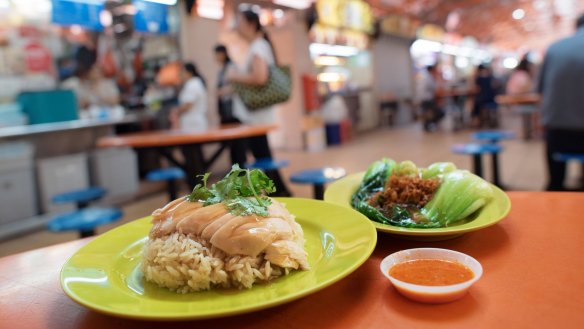
From there, he set about establishing his "Modern Australian" brand, opening Cheek by Jowl in February 2016. That mod-Oz spirit clearly carries through to the relaxed mood of the dining room – an extension of Naleendra's own easy-going nature – which has been packed lunch and dinner since he scored a star in the latest edition of The Michelin Guide Singapore.
It is also clear when you sit down to eat. Dishes like kangaroo loin in wattle-seed jus and Rangers Valley rib-eye, from NSW, patently reference his adopted home Down Under, while embracing and borrowing from other cuisines. The rib-eye dish, for example, includes yuzukosho butter.
But it is also very Singapore. Many restaurants, especially fine diners, fly in produce from all corners of the globe. Naleendra brings in produce from Australia as well as ingredients, such as fish and vegetables, from all over Europe.
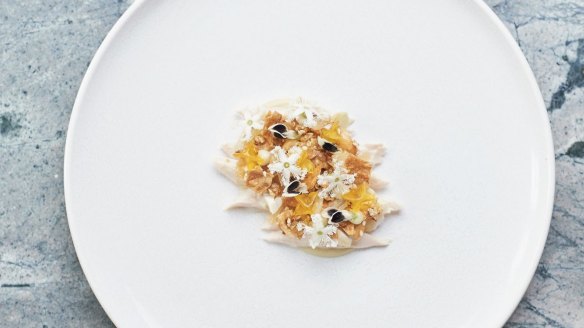
Playing to local tastes
Naturally, Naleendra sources some produce from local markets. "The markets are cool but very different to Australia," he says. Two that he likes are the Tekka Centre and Tiong Bahru Market, both of which have hawker food stalls.
This is where getting to know and experience Singapore's hawker centres has proved vital. It has helped Naleendra understand local tastes, but also appeal to their very discerning palates, which favour lighter flavours. Chefs tell you Singapore's diners aren't shy about letting you know if they don't like something.
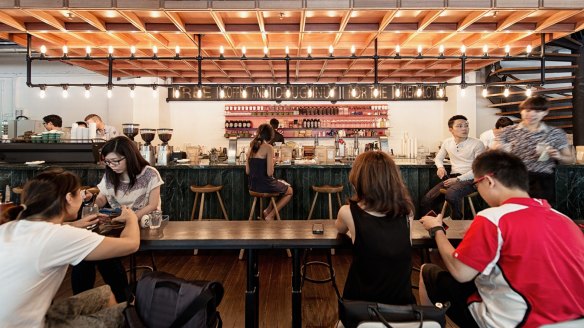
Hawker food has helped shape Naleendra's menu. For his original pop-up, he created a laksa leaf (Vietnamese mint) ice-cream with green chillies, coconut and the citrus fruit pomelo, a dessert still available occasionally at Cheek by Jowl. "People were instantly connected," says Naleendra. "That dish helped a lot to establish myself here."
Another early hit was beef salad with salted egg yolk (popular in Singapore), used as a powder. "They'd never seen it used that way before … but related to it straight away."
Finding the hawker centres
For Naleendra, though, there is no easy way to suss out the local hawker scene. Essentially, it's come through recommendations from friends and locals, and plenty of trial and error. At the ones he likes best, he's often the only foreigner standing in queue. "The hawker centres are real, not (designed) for tourists," he says.
That's not to say tourists aren't welcome. Naleendra recommends visitors seek advice from locals. If you're eating in a restaurant, talk to the waiters and chefs. Check out Instagram for clues. "You're like a kid in a candy shop," he smiles. "You become obsessed."
Naleendra believes Chinatown's Hong Lim complex, where he lives, is a good starting point. It has his favourite curry puffs, the flat rice noodle dish char kwai teow and curry chicken noodles. "It's very central, local and you get a really good sense of what hawker centres are about."
In addition to Tai Hwa Pork Noodle, Naleendra likes chicken rice, another popular hawker dish, from Tian Tian in the Maxwell Food Centre. He says you can tell it's doing well because it has expanded to two stalls.
For chilli and black pepper crab, another local favourite, he heads to No Signboard Seafood – so named because the stall opened with no signage – in Geylang, the city-state's red light district.
Naleendra is also fond of prata, the Indian-style roti bread. He especially likes its variations, such as sugar, fish curry and something called a plaster, a prata topped with a sunny-side egg. Mr and Mrs Mohgan's super crispy roti prata is his pick.
When in hawker centres, order medium-sized serves, he advises. "Medium is traditional, it's muscle memory," says Naleendra. "Locals told me the ratios (of ingredients) are perfect. If you're hungry, go for another medium, not large … it's not the same."
Beyond the hawkers
Of course, Singapore is more than just hawker food. For sandwiches, Naleendra says it has to be Park Bench Deli – go the Cubano or one of the breakfast rolls. For good coffee, it's Nylon Coffee Roasters or Common Man, run by Australian Matt McLauchlan.
For something finer, Naleendra likes Burnt Ends, Whitegrass (he counts Sam Aisbett as a mate) and Cure. Or he heads to Marina Bay Sands for "quality but pricey food", where he recommends Osteria Mozza and DB Bistro.
The resort complex also has Tetsuya Wakuda's Waku Ghin. If the restaurant prices are too steep, Naleendra suggests snacks and cocktail at the bar. "It's an affordable way to enjoy it."
He also singles out Manhattan Bar for classic-styled drinks and Aussie Luke Whearty's Operation Dagger bar for its wild garden-to-glass creations, such as cabbage wine, tomato beer and banana wine.
Naleendra acknowledges he still has much to explore and discover: "You'll always find something new here and it keeps evolving." It's what still anchors him to Singapore, keeps him fresh.
And while in the longer term he plans to return to Australia with Manuela, for the moment, he's more than happy to continue bathing in the reflected glow of his Michelin star. "I'm not feeling the pressure, rather I'm using the Michelin star as a tool to motivate and inspire me."
Restaurant reviews, news and the hottest openings served to your inbox.
Sign up